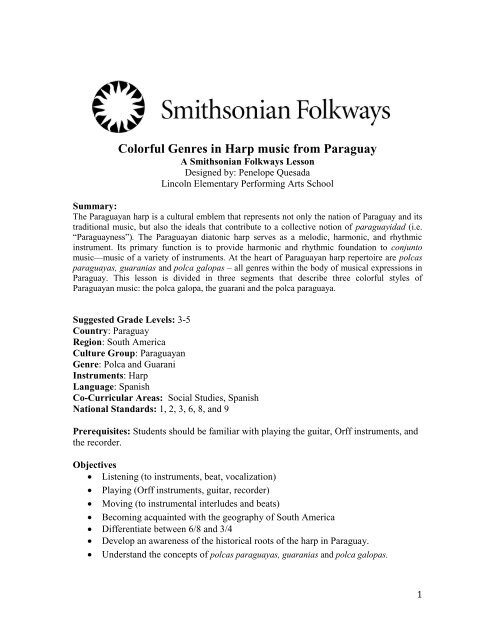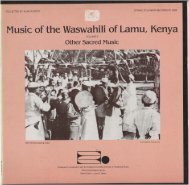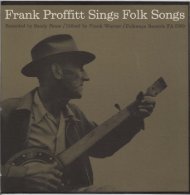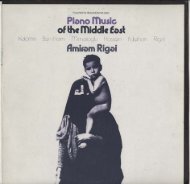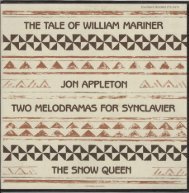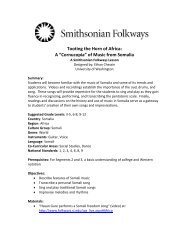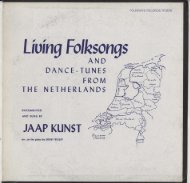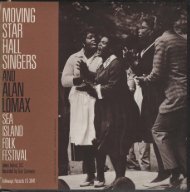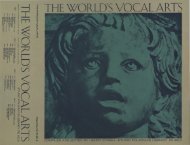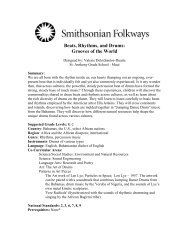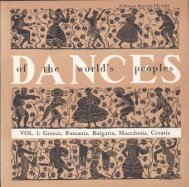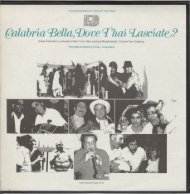Colorful Genres in Harp Music from Paraguay - PDF Lesson
Colorful Genres in Harp Music from Paraguay - PDF Lesson
Colorful Genres in Harp Music from Paraguay - PDF Lesson
You also want an ePaper? Increase the reach of your titles
YUMPU automatically turns print PDFs into web optimized ePapers that Google loves.
5. Ask students to exam<strong>in</strong>e a picture of a <strong>Paraguay</strong>an <strong>Harp</strong> (below) and makea list of some characteristics.6. Ask students to determ<strong>in</strong>e the location of <strong>Paraguay</strong> by ask<strong>in</strong>g on whichcont<strong>in</strong>ent it can be found. Show the students a map of South America andpo<strong>in</strong>t to <strong>Paraguay</strong>. Provide some <strong>in</strong>formation about the nation-state,<strong>in</strong>clud<strong>in</strong>g its capital city, its official languages, and its climate. Further<strong>in</strong>formation about these subjects can be found on the follow<strong>in</strong>g page.3
<strong>Paraguay</strong> is officially known as the Republic of <strong>Paraguay</strong> (Spanish: República del<strong>Paraguay</strong>). It is one of two landlocked countries <strong>in</strong> South America; the other is Bolivia.As of 2009, the population of <strong>Paraguay</strong> was estimated at 6.3 million. The capital andlargest city is Asunción. The official languages of <strong>Paraguay</strong> are Spanish and Guaraní,both be<strong>in</strong>g widely spoken throughout the country, with around 92% of the generalpopulation speak<strong>in</strong>g Spanish and 98% speak<strong>in</strong>g Guaraní. The overall climate ranges <strong>from</strong>subtropical to temperate, and like most lands <strong>in</strong> the region, <strong>Paraguay</strong> has only a wet anddry season, not four seasons like most of the United States.4
Show the different regions <strong>in</strong> <strong>Paraguay</strong>, and note the locations of rivers and cities.Picture <strong>from</strong> Wikimedia Commonshttp://commons.wikimedia.org/wiki/File:La_Palmyre_002.jpg5
Picture courtesy of the Smithsonian Collection7. Give students some background <strong>in</strong>formation about the history of the harp(arpa). Include the follow<strong>in</strong>g <strong>in</strong>formation:<strong>Paraguay</strong>an harps are local adaptations of the <strong>in</strong>struments brought <strong>from</strong>Europe by Jesuit missionaries dur<strong>in</strong>g the 17th and 18th centuries. Theearliest references to the presence of the harp <strong>in</strong> <strong>Paraguay</strong> dates back tothe 16th century, to a Spaniard named Sebastian Gaboto. The diatonicharp was utilized to accompany liturgical s<strong>in</strong>g<strong>in</strong>g <strong>in</strong> Jesuit missions.<strong>Music</strong> became a tool for evangeliz<strong>in</strong>g the <strong>in</strong>digenous peoples.After the expulsion of the Jesuits <strong>from</strong> <strong>Paraguay</strong> <strong>in</strong> the 18th century, somemission Indians kept their learned professions and assembled <strong>in</strong> towns,contribut<strong>in</strong>g to the colonial “mestizaje” (cultural and biological mix<strong>in</strong>g).From the last quarter of the 19th century, a period of rebuild<strong>in</strong>g dur<strong>in</strong>g theTriple Alliance War (1865–1870), through the middle of the 20th century,the Guairá area produced many artists, <strong>in</strong>tellectuals, luthiers, andmusicians, such as performer and composer Félix Pérez Cardozo (1908–1952). Epifanio López (1912–2001) was a highly regarded luthier whoestablished the first guitar and harp workshop <strong>in</strong> Asunción. Typically,these musicians, composers, and <strong>in</strong>strument-makers acquired and passedon their knowledge and skills through oral tradition.6
Pictures <strong>from</strong> the videos of <strong>Paraguay</strong>an <strong>Harp</strong>ist Marcelo Rojashttp://www.folkways.si.edu/video/mexico_central_south.asp8. Have students listen to “Pájaro Campana”. Ask students to describe themusical characteristics of this <strong>Paraguay</strong>an Polka. Tempo: Fast Meter: Compound, 6/8 Rhythmic character: Lively, driven, syncopated Special technique: Sesquialtera, the feel<strong>in</strong>g of 3/4 aga<strong>in</strong>st6/8: // // // vs. /// /// Form: polka, dance Melodic phrases are syncopated Harmony: Usually follow<strong>in</strong>g a I–V–I–IV–I–V–I sequence Accompaniment pattern: Broken bass chords with supportof strumm<strong>in</strong>g patterns by harp or guitar.9. Divide <strong>in</strong> two groups, and challenge them to “hold their own” by plac<strong>in</strong>gthe sesquilatera <strong>in</strong> two groups. Group One will perform the 6/8 bystomp<strong>in</strong>g on beat one and four, while Group two will perform the 3/4 partwith the first beat patt<strong>in</strong>g, the third beat clapp<strong>in</strong>g and fifth beat snapp<strong>in</strong>g.Each group can practice these parts separately, then together, and f<strong>in</strong>allywith the record<strong>in</strong>g of “Pajaro Campana.”Group One: Stomp / (/ /) / (/ /)> >Group Two: / (/) / (/) / (/)> > >Pat Clap Snap7
A. Teach students the guitar part for “Pajaro Campana.” The guitar plays the steadybeat <strong>in</strong> 6/8 on C and G chords, 4 Cs and then 4 Gs all the way through the piece.8
Chord sequence: strum each chord on each beat.C C C CGGGGB. Teach students the melody for “Pájaro Campana” on the recorder (see Page 10).C. Teach students the bass l<strong>in</strong>e for “Pajaro Campana” on the bass xylophone (seePage 10).9
Bass xylophone part:Assessment: Students will be able to (1) describe the arpa; (2) recognize polca style asplayed by the <strong>Paraguay</strong>an arpa; (3) keep the chang<strong>in</strong>g 3/4 and 6/8 beats of a sesquialitera;and (4) play a polca on classroom <strong>in</strong>struments.10
<strong>Lesson</strong>2: Recuerdos de Ypavarai – Guarania style1. Listen to the song and ask “How is this song different <strong>from</strong> “Pajaro Campana?”(Answers might <strong>in</strong>clude the fact that this is a vocal and <strong>in</strong>strumental piece.)2. Learn the Spanish lyrics by imitation, l<strong>in</strong>e by l<strong>in</strong>e. This can be done by theteacher’s, or a student’s, live pronunciation, or by start<strong>in</strong>g and stopp<strong>in</strong>g therecord<strong>in</strong>g.3. S<strong>in</strong>g the song together.Translation by Penelope QuesadaA warm night we metNext to the lake Blue YpacaraíYou were s<strong>in</strong>g<strong>in</strong>g sad about the wayOld tunes <strong>in</strong> Guarani.And the spell of your songsWas born and your love on meAnd <strong>in</strong> the beautiful full moon nightIn your white hands I felt the heatThat with his touch gave me love.Where are you now cuñataíMay your gentle song does not reach meWhere are you nowMy soul loves you madly.Everyth<strong>in</strong>g rem<strong>in</strong>ds you my sweet loveNext to the lake Blue YpacaraíEveryth<strong>in</strong>g rem<strong>in</strong>ds me of youMy love calls you cuñataí.11
4. Listen to the <strong>in</strong>strumental version and mark steady beat with hand-clapp<strong>in</strong>g.http://www.folkways.si.edu/albumdetails.aspx?itemid=32255. List together some of the musical characteristics of the Guarania: Instrumentation: Vocal and <strong>in</strong>strumental Tempo: Slow Phrase: Longer than many song styles Variations: Melodic accentuation and syncopation Meter: 6/8 (like the polka)Assessment: Students will be to (1) differentiate a “Guarania” <strong>from</strong> a “Polca” byidentify<strong>in</strong>g their musical characteristics and (2) s<strong>in</strong>g a “Guarania”.12
<strong>Lesson</strong> 3: Piririta – Polca <strong>Paraguay</strong>a and the <strong>Harp</strong>1. Listen to the piece and mark the steady beat of dotted quarter <strong>in</strong> 6/8 by clapp<strong>in</strong>g.Mark the 3/4 with three quarter notes per measure. Pat the first quarter note, clapthe second quarter note, and snap the third quarter note. Feel the 6/8 aga<strong>in</strong>st 3/4.Try play<strong>in</strong>g (with body percussion) the two metric <strong>in</strong>terpretations together.(For students who have experienced <strong>Lesson</strong> One (Page 2), this will appear as areview—a transfer of knowledge about the sesquialtera to a new musicalselection.)2. Ask: “What are the music characteristics of this piece?” Meter: Compound 6/8 Tempo: Moderate Rhythm: Syncopation (<strong>in</strong> melody and bass l<strong>in</strong>es) Instruments: Arpa and Guitar Feature: Rapid exchange between compound duple (6/8) or simpleduple (2/4) meter and triple (3/4) meter. Introduction: Short <strong>in</strong>strumental Form: Bridge or recurrent <strong>in</strong>strumental <strong>in</strong>terludes performedbefore and between stanzas.3. Perform the 6/8 aga<strong>in</strong>st 3/4 with body percussion without and then with therecord<strong>in</strong>g “Piririta.”Assessment: Students will be able to demonstrate 6/8 aga<strong>in</strong>st a 3/4 with body percussion.13


